// By Brad Walker March, 2005
Note: This essay was written while I was working on a graduate degree a decade ago. The assignment was to determine whether I thought we needed nature. I hope it will be an interesting change from the rather intense articles that I typically write and does break the “no travelogue rule” extensively. Also, there are a couple of papers referenced in the first paragraph (Pleninger & Goldstein) that are not pertinent, so just ignore them.
Do we need nature?
It seems it requires a good bit of arrogance to ask such a question. As is quite elegantly pointed out in the Pleninger paper, we should more likely be asking ourselves whether nature needs us? It is easy to be dismissive, or just say “Of Course”, but I must provide a response. While considering my response other questions crossed my mind, such as: What is nature? And then, Whose nature are we talking about? Finally, Am I really qualified to even answer the question? So, the best way I believe I can answer is to describe how I got where I am today, a 50+ year-old Geography graduate student at the University of Florida, inspired somewhat by the Goldstein paper.
The Early Years
My first true contact that I recall with the ‘wilds’ of nature was when I was about seven. I lived in a small rural town west of Chicago along the Fox River. We had moved to a new brick duplex on 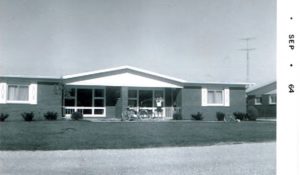 the town edge surrounded by acres of cropland. The neighborhood kids and myself had discovered a creek across the field behind our house that we trekked through nearly every summer day to pretend we were Indians. We built forts along the creek, fought imaginary wars, sifted through the creek for little animals and bugs, and enjoyed the quiet and pleasant smells of the little valley. It seemed miles from home though it was actually just about a block up the hill. We enjoyed our ‘Spear Valley’ for several years until we grew up at about 11 or 12. One of those summers I shot my first and only bird, never picking up a gun again.
the town edge surrounded by acres of cropland. The neighborhood kids and myself had discovered a creek across the field behind our house that we trekked through nearly every summer day to pretend we were Indians. We built forts along the creek, fought imaginary wars, sifted through the creek for little animals and bugs, and enjoyed the quiet and pleasant smells of the little valley. It seemed miles from home though it was actually just about a block up the hill. We enjoyed our ‘Spear Valley’ for several years until we grew up at about 11 or 12. One of those summers I shot my first and only bird, never picking up a gun again.
After high school, during which I enjoyed several years of drafting widgets and houses in industrial arts class, I went to college and became an engineer. By that time I was obsessed with symmetry and technology. I worked summers in construction helping lay brick and place concrete, lots of right angles and flat surfaces, and everything in its place. Between my sophomore and junior years I took a trip across the southern part of the US from Nevada to Florida taking pictures of places like Hoover Dam, the Astrodome, Cape Kennedy and Disney World, pretty much ignoring everything else.
My First Real Job – Awe and Shock

After graduating from college I took a job with a large engineering and construction company headquartered in Boise, Idaho. This company had been the lead partner on the construction of the Hoover Dam, built the Vehicle Assembly Building for NASA, were building the most difficult section of the Alaska Pipeline and had other projects all over the world. I was in heaven, having been hired by a company that could build or design anything just about anywhere.
Almost immediately I discovered the rest of Idaho, which is largely state parks, national forests or designated primitive areas owned by either the federal or state governments. My new wife and I would leave Boise on the weekends and explore the hinterlands. It seemed that in any direction we drove we saw some wonderful new and fascinating scenery. We drove to valleys in the Sawtooth Mountains, the Craters of the Moon National Park where astronauts trained, Sun Valley, abandoned silver mining towns, the Snake River and several of the state parks. Idaho is covered with forested mountains to the north with beautiful fast running, clear rivers, and colorful high desert to the south. Enjoying the smell of Ponderosa pines and listening to the breeze rustle the branches and needles was about the most relaxing thing I had ever experienced. We fell in love with a valley on the Payette River near a town called Smith’s Ferry and vowed to build a home there someday. It was the most picturesque setting we had ever seen.
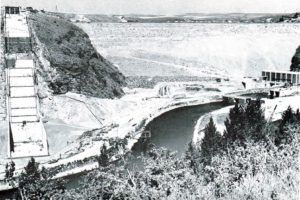
My world was shaken a bit during the late spring of 1976. My company was building a large, 305-foot high rock-filled dam in Idaho and the reservoir was being filled for the first time. A group of us rookie engineers went to visit the site and were duly impressed with the hugeness and efficiency of the project.
The dam was going to provide irrigation water for agriculture in the area and the power plant below the dam was to provide power for eastern Idaho. It was the shot of company pride we needed after being confined inside for a year looking at construction blueprints and estimating the cost of new projects. A few weeks later the dam collapsed killing over a dozen people and wreaking havoc downstream for dozens of miles. The cause was an unanticipated site condition and deemed not my company’s fault but some of my faith had been lost forever.
A Semi-Charmed Life
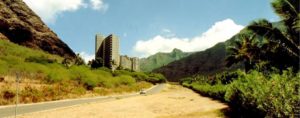
Within a month or so I was transferred to my first field assignment. Single guys were going to projects in places like Saudi Arabia, Zaire, Indonesia and Brazil. Others went to work on the subway in Washington DC, a brewery in Virginia, a submarine base in Connecticut or a coal mine in Wyoming. I got an assignment in Oahu, Hawaii working on a power plant outfall extension into the Pacific Ocean. Landing in Hawaii was an olfactory experience beyond any I had had before. The scents of the tropical flowers were so strong and enjoyable I thought at first they could not be real. They of course were and it was an experience I will always remember. Working in Hawaii was an unbelievable opportunity. We lived on the 20th floor of a high-rise apartment complex in the most beautiful basaltic mountain valley I could imagine. We had a view from our balcony of the ocean that provided us with postcard sunsets every evening.
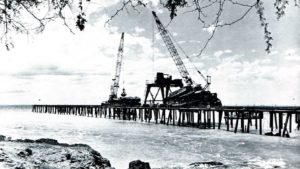
I drove along the undeveloped coast every day, the first three months working in the field office at the power plant project. We were laying 12-foot diameter concrete pipe 650 feet out into the ocean to discharge heated water from the plant. In order to place the pipe sections into the 21-foot deep trench divers used dynamite to loosen the coral reef covered ocean bottom to allow excavation. In my fourth month in Hawaii I was transferred to two other projects in Honolulu. One was a runway at Hickam Air Force Base where I got to gawk at huge C-5 cargo planes and jet fighters. The other was a military housing project located within an extinct volcano. My extended trip to Honolulu allowed me to travel through miles of sugar cane fields before reaching the urban area. On the weekends we went just about everywhere we could on Oahu and on my vacation we flew to Kauai. The tropical tree covered, steep volcanic mountains of Hawaii contrasted sharply with the starker column-like, basaltic scenery of parts of Idaho but both are beautiful. We enjoyed the tourist places, driving through the forests in the island center, and spending time playing in the ocean or just watching and listening to the breakers.
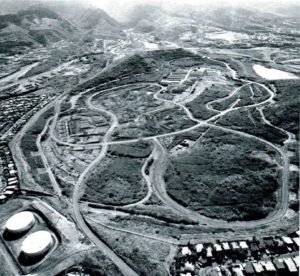
We became island happy in less than a year though because Oahu is really not very big. My wife was anxious to leave paradise. She was pregnant with our first child and was not comfortable with the medical situation. I also found out she was being harassed by locals whenever she took the bus while I was at work. We lived in an area of the island where native Hawaiians had been historically relegated. They did not think highly of” haoles” and let her know it.
In July, almost exactly one year in Hawaii, I was transferred to Las Vegas, Nevada to work on a large advanced wastewater treatment plant, talk about landscape shock. Las Vegas is a unique city in the world, I got the feeling that the strip was a series of movie fronts because the casinos seemed constantly being remodeled or completely torn down to build a newer, more lavish one in its place. It seemed cost was never a consideration and there was apparently a contest for the most elaborate waste of water. The city was growing fast. There were times I was traveling to other parts of the country for weeks at a time and it seemed there were whole new blocks built while I was away.
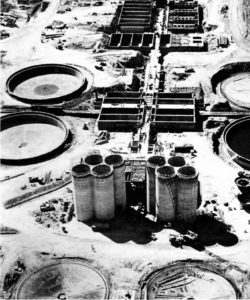
Living in Las Vegas was sometimes surreal. The project I worked on was a facility to further clean wastewater before being discharged into Lake Mead, the major water source for Las Vegas. Water is really important and scarce in Las Vegas, though there never really seemed to be any concern for conserving it while we lived there. Everyone had lawn sprinkler systems for their grass yards and many people had swimming pools. The company I worked for built a large water park on the Strip while we lived there. Because Las Vegas is located in a partially confined valley, during the winter there was a smog problem that prompted the county to disallow the use of fireplaces.
I often wondered how much the electric bills for powering the huge, elaborate neon casino signs were. While living in Nevada I bought five acres of forested land in Idaho, not far from that place I loved, along with several other people I worked with sight unseen, based solely upon the assurances of a fellow worker. Eventually one of the other landowners and I went and visited our property and, except for dealing with falling and failing parts from his Mercedes, we were completely satisfied with our trip to see our investment.
Trouble in Paradise
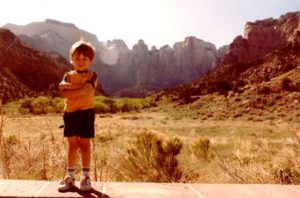 My wife and I had two sons then got divorced while we lived in Las Vegas. I became a single parent of my four-year old son, which was just a bit of a life style change. To help assimilate my son to our new living arrangement I decided to take him camping and introduce him to nature, at least my view of it. We stayed at Zion National Park, Sequoia National Park and Big Sur, three of the most impressive places in the West. Over the next three years we went cross-country skiing in the mountains west of the city, hiking in the Red Rock area, and horseback riding and fossil hunting in the desert just south of where we lived. By the time we moved from Las Vegas after eight years I had grown to love the desert. But we were leaving more than a place; we were leaving my youngest son and my son’s mother behind as well.
My wife and I had two sons then got divorced while we lived in Las Vegas. I became a single parent of my four-year old son, which was just a bit of a life style change. To help assimilate my son to our new living arrangement I decided to take him camping and introduce him to nature, at least my view of it. We stayed at Zion National Park, Sequoia National Park and Big Sur, three of the most impressive places in the West. Over the next three years we went cross-country skiing in the mountains west of the city, hiking in the Red Rock area, and horseback riding and fossil hunting in the desert just south of where we lived. By the time we moved from Las Vegas after eight years I had grown to love the desert. But we were leaving more than a place; we were leaving my youngest son and my son’s mother behind as well.
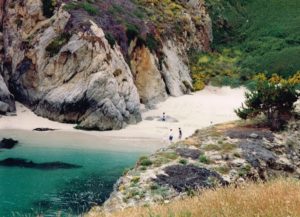
Our new home was in the Monterey, California area south of San Francisco. I found myself living again in a very scenic ocean and coastal mountain setting. I was working on the construction of another large wastewater treatment plant, this one jointly serving several towns in Monterey County. Our plant would discharge the effluent into the Monterey Bay, though quite a distance out through an outfall that had already been constructed. A few years later they started using the effluent to recharge the aquifer to circumvent saltwater intrusion caused by irrigation overdrawing. I was in charge of this project and was becoming an expert in my field but was beginning to feel a loss of focus. I realized my priorities and perspective were changing largely from being solely responsible for a six year-old child. I was beginning to look at the world somewhat differently.
Second Level of Awakening
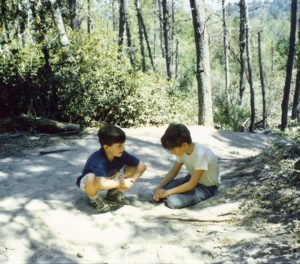
For relaxation I was spending time hiking, usually by myself. Concurrently my son and I bonded through computers, it seems he was not all that interested in nature. The ocean in central California is not a place for casual swimming since most of the time it is in the mid 50 degrees Fahrenheit range so our time at the beach was limited to watching and reading. The one time I convinced my older son, along with my younger son who was visiting, to go camping they insisted I rent a recreation vehicle because camping was apparently too much nature for them. Unfortunately, the only one available to rent during that week was about 34-feet long. It was so big it had a TV camera instead of a rear-view mirror. There was also a TV and microwave oven. This was one of the most absurd vacations I ever had sitting 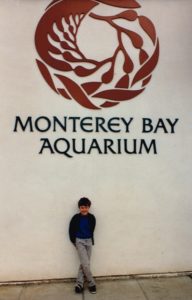 inside of this mechanical monstrosity in the Santa Cruz Mountains. The drive back down the narrow, curving mountain roads seemed endless with my sons expecting us to plunge off a cliff at every turn.
inside of this mechanical monstrosity in the Santa Cruz Mountains. The drive back down the narrow, curving mountain roads seemed endless with my sons expecting us to plunge off a cliff at every turn.
While living in Monterey I had the good fortune to volunteer as a guide for about six months at the Monterey Bay Aquarium. The aquarium specializes on the Monterey Bay ecosystem and was groundbreaking in its design and approach. This was exposure to a part of nature I had never experienced before. In 1990 I took my sons to Oahu for my return to paradise. Hawaii was still beautiful and the scents as pleasant as I remember, but in just 14 short years that rural route along the coast and into Hawaii I had taken each day was now developed.
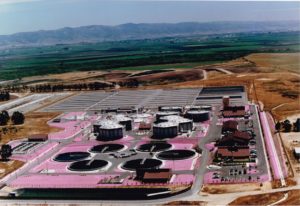
After completion of the Monterey project I was transferred to San Diego to work on a water distribution project. We had proposed on the San Diego regional wastewater facility but were unsuccessful. My son and I were happy to be moving to another beautiful, sunny location. The portion of the project I was responsible for was laying 8-foot diameter pipes through several of the suburbs of San Diego. Overall, the project was to supplement the strained water system of the San Diego area. Water is piped in from as far away as the Colorado River to support the city’s population. In reality the area around San Diego, much like Los Angeles, is really a desert. Our new house had a nice view of the desert mountains to the east of San Diego. After a short time I became frustrated with my project and the company’s new upper management who was trying to move the company into a manufacturing emphasis so I spent more time hiking to deal with it. One place I found in San Diego I really enjoyed was Balboa Park, man’s created nature in this city. The park has several museums and one of the best zoos in the world. It also has large areas of landscaped open space and historical buildings maintained from the 1915 Exposition.
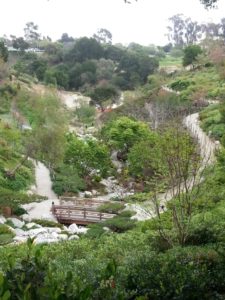
After less than a year in San Diego I could no longer justify my occupation and left the company I had been employed by for 17 years. My timing was pretty good because a few years later the president had bankrupt this historic 85 year-old company. He never understood that a construction firm’s most important resource is its people, maybe one of the few examples I think Julian Simon might have got it right about the most valuable resource. I began to consult in construction, which allowed me more flexibility in my assignments and clients. I also created and sold construction management software programs to my clients, which was a good distraction and challenge. It had become very important for us to stay in the San Diego area to allow my son to complete high school in one place. I noticed a growing discontentment with my direction and ideals. I also recognized that there had been events, some seemingly tiny, almost insignificant, that cumulatively had a profound effect upon me. I struggled through the next three years while my son finished high school, spending much of my spare time preparing our house for sale and wandering around Balboa Park and other local areas.
The Beginning of the Transformation
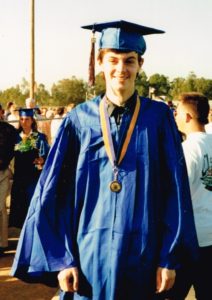 In 1996 we moved to Illinois arriving on the day of a record 19-inch rainstorm in Northern Illinois, my circle had closed. We moved into a mirror image brick duplex right
In 1996 we moved to Illinois arriving on the day of a record 19-inch rainstorm in Northern Illinois, my circle had closed. We moved into a mirror image brick duplex right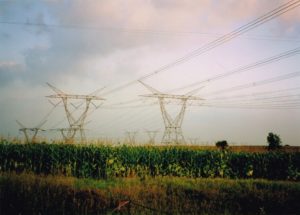 next to the house I grew up in. My son’s bedroom was right across the driveway from my old bedroom, another very surreal experience. We lived there two years while I continued to ‘find’ myself. I was still consulting, traveling occasionally back to California when my clients needed to see my face. In the winter I especially looked forward to some warming up time near the mountains and sea that I had grown accustomed to. Northern Illinois was sprawling like mad and I could hardly recognize the place I had grown up in. The farm fields behind our house, along with many other fields in the area, had become housing developments. It really upset me thinking how wasteful it probably was to pave over so much of the best farmland in the world. I joined the Sierra Club and local growth control groups, went to local government meetings and become a nuisance by writing letters to the editor of the local papers. I read everything I could get my hands on about sustainable development, suburban sprawl and related environmental issues. I finally decided I needed to do something drastic, something that would test me and hopefully push me down a more productive path.
next to the house I grew up in. My son’s bedroom was right across the driveway from my old bedroom, another very surreal experience. We lived there two years while I continued to ‘find’ myself. I was still consulting, traveling occasionally back to California when my clients needed to see my face. In the winter I especially looked forward to some warming up time near the mountains and sea that I had grown accustomed to. Northern Illinois was sprawling like mad and I could hardly recognize the place I had grown up in. The farm fields behind our house, along with many other fields in the area, had become housing developments. It really upset me thinking how wasteful it probably was to pave over so much of the best farmland in the world. I joined the Sierra Club and local growth control groups, went to local government meetings and become a nuisance by writing letters to the editor of the local papers. I read everything I could get my hands on about sustainable development, suburban sprawl and related environmental issues. I finally decided I needed to do something drastic, something that would test me and hopefully push me down a more productive path.
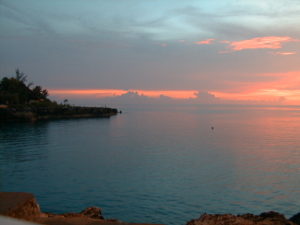
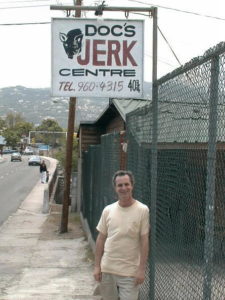
In the summer of 1998 I left for a Peace Corps assignment in Jamaica. During the application process I had been diagnosed (fortunately incorrectly) with asthma before leaving. Peace Corps sends all of the medical risks to Jamaica because it is close to the US. The two years I spent in Jamaica helped me recognize that I needed to broaden my formal education and experience, so after coming back I got a Master’s degree and then spent two and a half years working in Northern Illinois organizing county level groups protect farmland from development.
During those three or four years I realized how much my perspective on nature had changed, which I have never really put into words until now. Straight lines and manicured lawns are not really attractive to me now. I prefer the irregularity of places like prairies, especially in the spring and summer when the wild flowers bloom. I am no longer blindly impressed by technology. I have seen how destructively we can use it and the many unintended or poorly anticipated consequences that have occurred. I remember the creek that we use to play in and realize it was likely full of fertilizers and pesticides. I still have a piece of that coral from Hawaii to remind me how it was removed from the reef. I remember the insane proposal that the people in Las Vegas actually made to the government to dam the river in Zion National Park to provide the city with water. I think that the closest many people in San Diego ever get to nature is Balboa Park or in the zoo it contains and that the survival of those animals is completely dependent upon humans. My five acres of land in Idah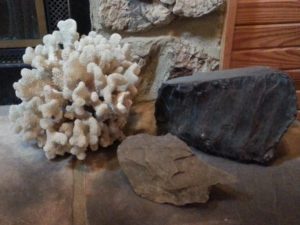 o is my forest preserve, which I will do my best to keep that way as long as I can.
o is my forest preserve, which I will do my best to keep that way as long as I can.
I am still finding my path and will hopefully learn enough to be useful to what remains of nature someday soon. My two sons still live in Northern Illinois; one of them is now married so I anticipate having grandchildren in the future. Each generation in the U.S. seems more disconnected from nature. I wonder how many generations it might take before the answer to the question becomes ‘No’? If I am lucky, I hope to have the opportunity to help us reconnect. Do we need nature? All I can say definitively is; I know I truly need my concept of nature, changing as it has been.
I did sell my land in Idaho because I realized I would never live there and I am pretty sure I have found my path. I hope you all have a Merry Christmas and a Happy New Year, especially those who are dealing with adversity.
